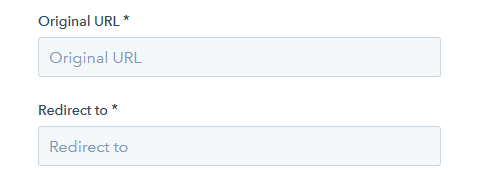Understanding SEO: The Ultimate Guide to Executing 301 Redirect for Site Optimization
Understanding SEO: The Ultimate Guide to Executing 301 Redirect for Site Optimization
Blog Article
Increase Organic Web Traffic by Utilizing the Potential of 301 Redirects for SEO
When it involves optimizing a web site for online search engine, the calculated usage of 301 redirects can considerably influence natural web traffic growth. These long-term redirects play a critical role in guiding both individuals and internet search engine bots to the best pages, combining web link equity, and enhancing general website authority. By understanding the ins and outs of 301 redirects and applying them successfully, companies can open the full possibility of their SEO methods. Yet, the subtleties of redirect administration, paired with the ever-evolving search landscape, call for a meticulous approach to guarantee success.
Comprehending 301 Redirects Basics
When embarking on the journey to understand 301 redirects, it is necessary to realize the basic concepts that underlie this important element of site optimization. A 301 redirect is a permanent redirect from one URL to an additional. It notifies online search engine that the original link has actually relocated to a brand-new area, transferring the SEO worth from the old URL to the new one (301 Redirect). This procedure makes sure that users and search engines are routed to one of the most current and pertinent web page, enhancing user experience and keeping SEO positions.
Carrying out 301 redirects is important when restructuring a site, altering domain names, consolidating multiple web pages, or repairing damaged links. It aids protect back links, organic website traffic, and online search engine positions that the old URL had actually accrued gradually. In addition, using 301 reroutes correctly can stop customers from experiencing 404 mistakes, enhancing the general use of the website. Comprehending the essentials of 301 redirects is fundamental for any SEO method intending to improve site exposure and use while maintaining search engine rankings.
Executing Redirect Techniques
To effectively boost internet site efficiency and individual experience, tactical implementation of redirect techniques is essential in maximizing on-line existence. 301 Redirect. When executing redirect strategies, it is crucial to have a clear strategy in position to make sure a smooth shift for both search engines and customers. Begin by determining the pages that require to be rerouted and the most ideal redirect type to use, such as 301 redirects for irreversible actions or 302 redirects for short-term modifications
Regularly upgrading and assessing redirect strategies as needed is vital to keep a healthy and balanced website and take full advantage of natural website traffic. By implementing redirect techniques efficiently, web sites can enhance their Search engine optimization efficiency and give a better user experience.
Avoiding Common Redirect Mistakes
One important facet in keeping a smooth internet site transition throughout redirect execution is avoiding usual redirect blunders. One usual error to avoid is implementing multiple chains of redirects. These chains can decrease the individual experience and confuse online search engine spiders, leading to reduced natural website traffic. An additional blunder is not upgrading internal links to reflect the new redirect courses. When inner links indicate old URLs, it can cause an inadequate customer experience and negatively effect SEO initiatives. Additionally, falling short to establish correct redirects for both the www and non-www variations of a website can divide link equity and cause indexing problems. It is crucial to guarantee that all variations of the URL reroute to a single chosen version to consolidate ranking signals. By avoiding these usual redirect blunders and performing extensive testing post-implementation, site owners can effectively boost their search engine optimization strategies and drive natural traffic growth.
Tracking Redirect Efficiency
Guaranteeing the performance and performance of carried out redirects entails very closely checking their performance to gauge their effect on customer experience and search engine optimization efforts. If they are effectively guiding website traffic to the desired location, tracking the performance of 301 redirects is essential in figuring out. Making use of devices like Google Analytics can provide important insights into the web traffic circulation prior to and after carrying out redirects. Monitoring the organic traffic, bounce rates, and time invested in the redirected pages can help assess whether the redirects are meeting their intended goals. Additionally, frequently looking for any type of errors or problems that may occur with the redirects is important to immediately attend to and correct them. By constantly keeping track of redirect performance, website proprietors can make data-driven choices to maximize their search engine optimization methods and improve the overall user experience, inevitably bring about boosted organic traffic and search engine check positions.

Leveraging Redirects for SEO Growth
Redirects play a critical role in boosting the search engine optimization (SEO) growth of a website by strategically directing user web sites traffic in the direction of relevant web content. When executing redirects for SEO development, it is important to concentrate on maintaining web link equity by rerouting old Links to brand-new, pertinent web pages. Frequently reviewing the performance of redirects and making necessary adjustments based on analytics and Search engine optimization finest techniques is vital to driving continual organic web traffic development.
Conclusion
Finally, carrying out 301 redirects can considerably benefit organic website traffic growth by effectively guiding customers to relevant web content. Recognizing the fundamentals, applying redirect methods, preventing common blunders, and monitoring performance are essential actions in leveraging redirects for SEO development. By using 301 reroutes efficiently, sites can enhance their search engine positions and supply a better user experience, inevitably bring about boosted organic website traffic.

Monitoring the organic web traffic, bounce rates, and time spent on the rerouted web pages can assist evaluate whether the redirects are fulfilling their designated objectives. When implementing redirects for Search engine official site optimization growth, it is crucial to focus on protecting web link equity by redirecting old URLs to brand-new, appropriate pages. Comprehending the basics, applying redirect methods, preventing usual mistakes, and keeping an eye on efficiency are critical steps in leveraging redirects for SEO growth.
Report this page